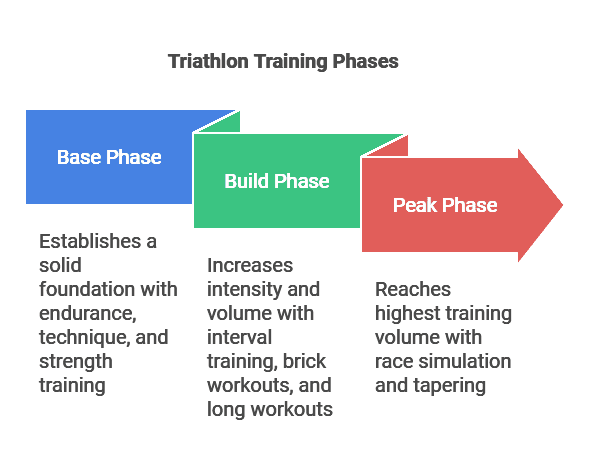The Process of Training for an Ironman Triathlon
Training for an Ironman triathlon is a monumental undertaking that requires dedication, discipline, and a well-structured plan. This document outlines the essential components of an effective training regimen, including the physical, mental, and nutritional aspects necessary to prepare for this grueling endurance event. Whether you’re a seasoned athlete or a first-time participant, understanding the training process is crucial for achieving your Ironman goals.

Understanding the Ironman Triathlon
An Ironman triathlon consists of a 2.4-mile swim, a 112-mile bike ride, and a 26.2-mile marathon run, all completed in succession. The total distance of 140.6 miles demands not only physical endurance but also mental resilience and strategic planning.
Training Phases
1. Base Phase
The base phase is where you build your aerobic capacity and establish a solid foundation. This phase typically lasts several months and focuses on:
- Endurance Training: Long, slow distance workouts in swimming, cycling, and running to build stamina.
- Technique Improvement: Working on swimming form, cycling efficiency, and running mechanics.
- Strength Training: Incorporating strength workouts to enhance overall fitness and prevent injuries.
2. Build Phase
During the build phase, the intensity and volume of training increase significantly. Key components include:
- Interval Training: Incorporating high-intensity intervals to improve speed and power.
- Brick Workouts: Combining bike and run sessions to simulate race conditions and adapt to the transition.
- Long Workouts: Gradually increasing the distance of long swims, rides, and runs to prepare for race day.
3. Peak Phase
The peak phase is where you reach your highest training volume. Focus on:
- Race Simulation: Completing full-distance workouts to familiarize yourself with the demands of the race.
- Tapering: Gradually reducing training volume in the weeks leading up to the race to allow for recovery and peak performance.

Mental Preparation
Mental toughness is as important as physical training. Strategies to enhance mental resilience include:
- Visualization: Imagining race day scenarios to prepare for challenges.
- Mindfulness and Relaxation Techniques: Practicing meditation or yoga to manage stress and anxiety.
- Setting Goals: Establishing realistic, achievable goals to maintain motivation throughout training.

Nutrition
Proper nutrition plays a vital role in training and recovery. Key considerations include:
- Balanced Diet: Consuming a mix of carbohydrates, proteins, and fats to fuel workouts and recovery.
- Hydration: Staying adequately hydrated before, during, and after training sessions.
- Race Nutrition: Practicing nutrition strategies during long workouts to determine what works best for your body on race day.

Conclusion
Training for an Ironman triathlon is a comprehensive process that requires careful planning and commitment. By following a structured training plan, focusing on mental preparation, and maintaining proper nutrition, athletes can set themselves up for success on race day. Embrace the journey, stay disciplined, and enjoy the incredible experience of completing an Ironman triathlon.
Coach Rory Duckworth
Salt Lake Triathlon Coach





